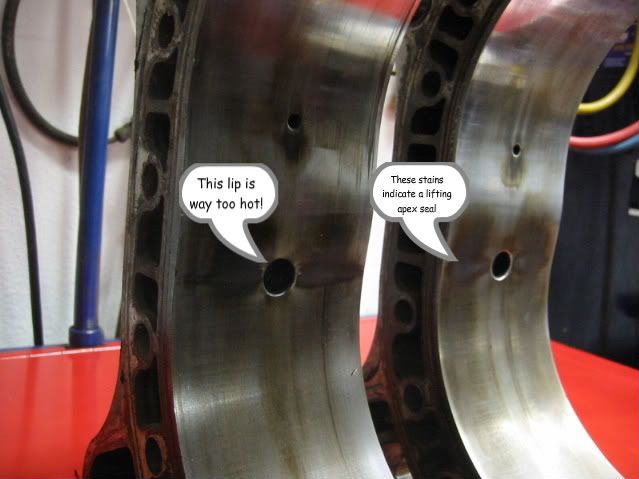Most people think that that their apex seal failures are caused by detonation. More specifically, they think the detonation was caused by some combination of poor fuel, advanced ignition, and high boost. This can and does happen but is not the root cause of the seal breakage.
One of my engines, which I thought would run a very long time because of reliability mods and low boost (14psi), lost an apex seal at about 30K miles. The only good news was that upon close examination I discovered a second apex seal in the set that was cracked but had not yet broken. (Sorry the magnification isn't better.)

I was surprised to find crack was emanating from the bottom side not at the exposed working face!
It makes perfect sense. The main part of the seal is supported unevenly at three points. The forth spring contact point is on the wedge portion of the seal. When the seal rocks over the high point in the housing, specifically, the spark plug openings, the tip is under pressure from the wedge.




